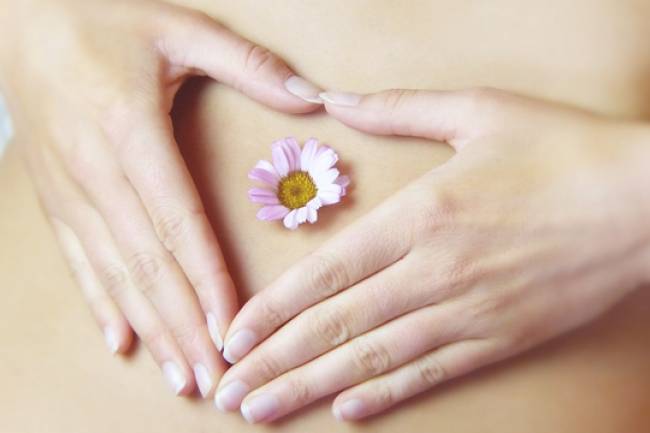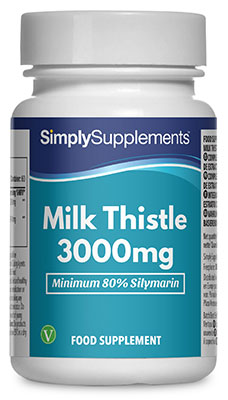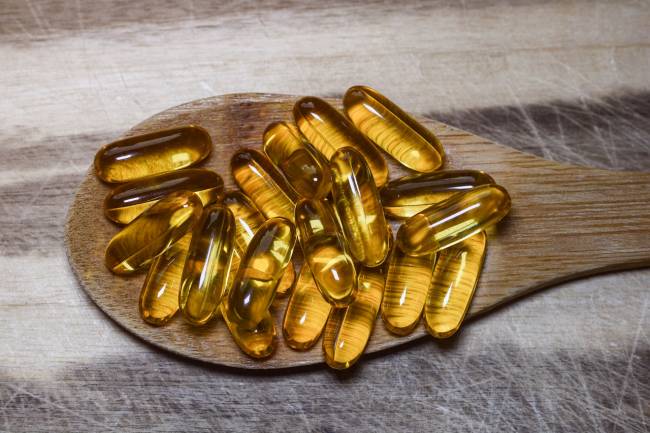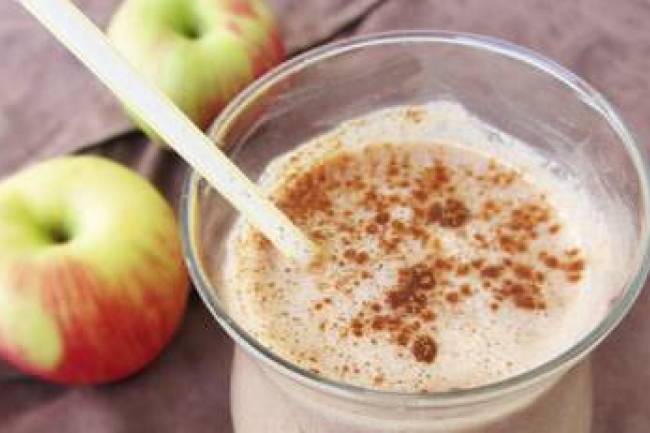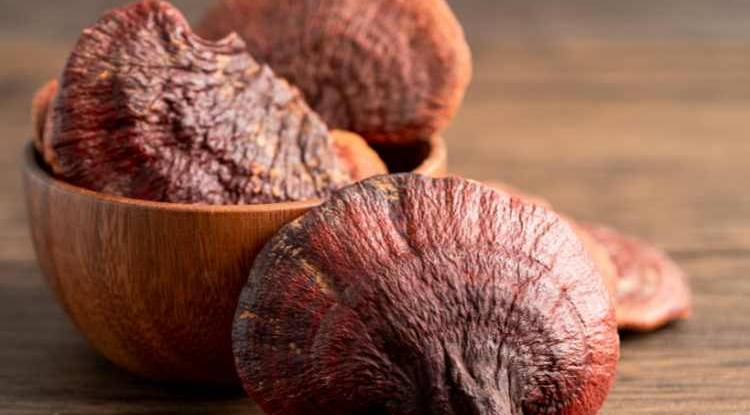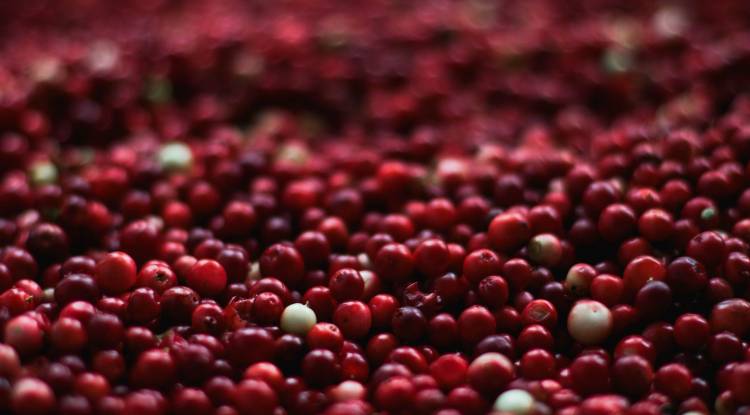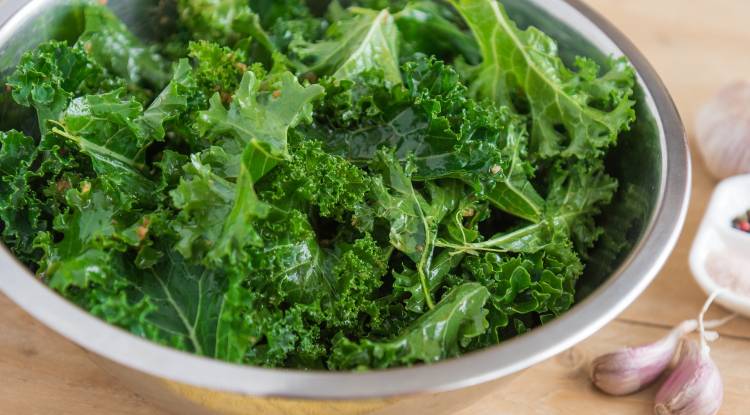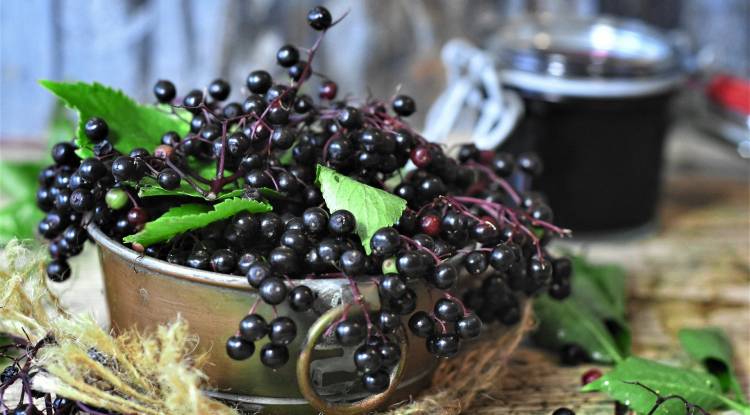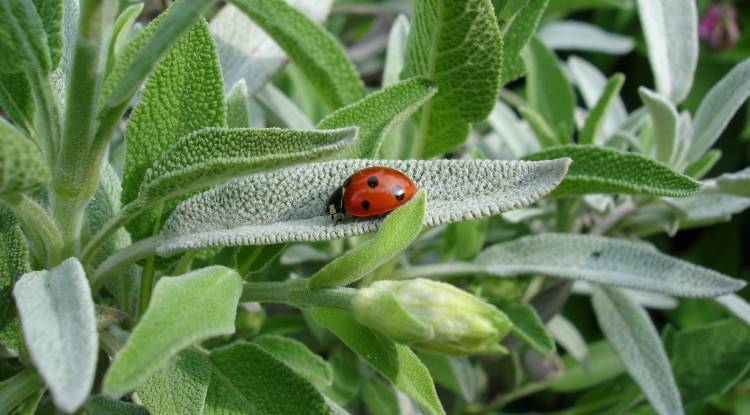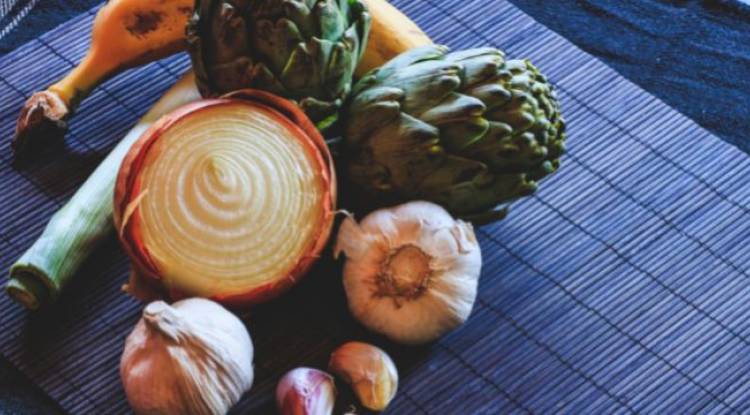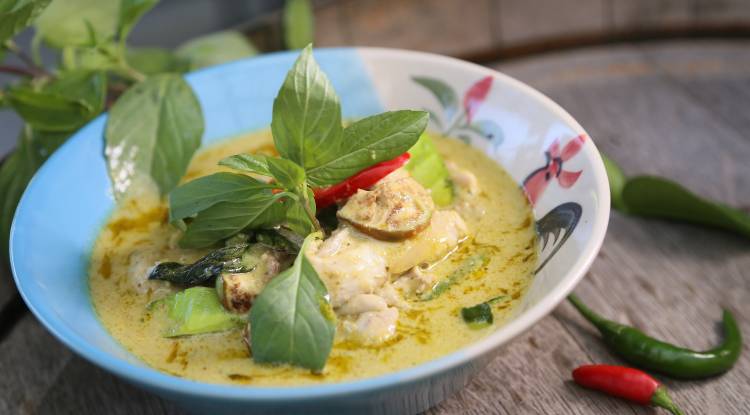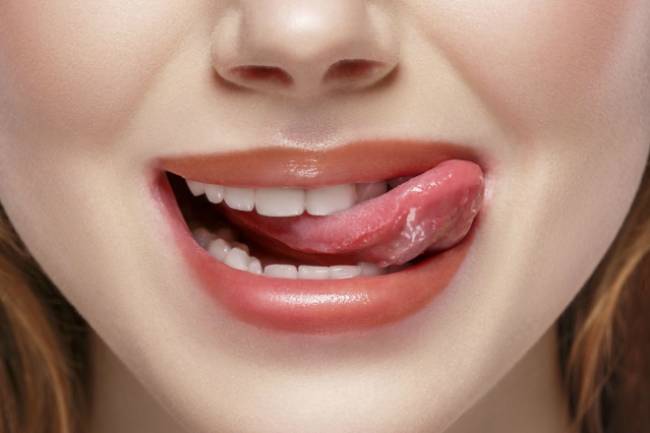Uses of Milk Thistle
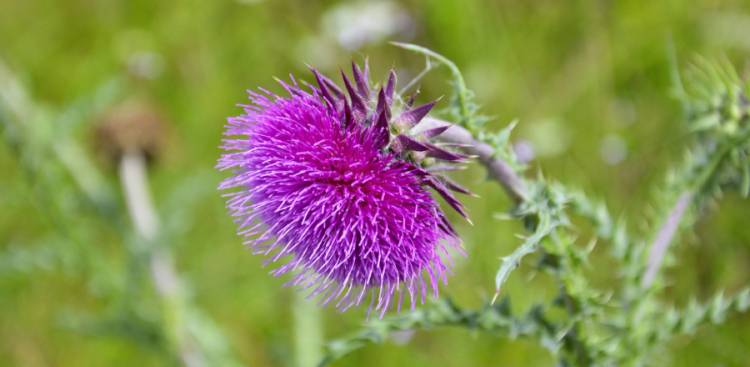
Milk thistle has a long history of medicinal use, having allegedly been enjoyed by the ancient Romans as an indigestion tonic after gluttonous feasting.
More recently, however, this traditional remedy has enjoyed something of a resurgence, as numerous scientific investigations have started to reveal some very promising uses for milk thistle. These days milk thistle is starting to gain acceptance in mainstream medical circles in response to the growing wealth of evidence supporting its use.
If you're intrigued about the world of milk thistle - and why so many of our customers swear by it - then read on to find out all about the potential uses of milk thistle.
What's So Beneficial about Milk Thistle?
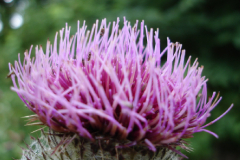 The milk thistle plant might not look like the most promising dietary supplement, but nothing could be further from the truth. It is believed by experts that the key health benefits of milk thistle are derived from an active compound known as “silymarin”.
The milk thistle plant might not look like the most promising dietary supplement, but nothing could be further from the truth. It is believed by experts that the key health benefits of milk thistle are derived from an active compound known as “silymarin”.
All parts of the milk thistle plant contain silymarin, but studies have shown that it is most concentrated in the seeds and fruits. It is from these sources that many milk thistle supplements are therefore derived, with a typical milk thistle extract containing roughly 65-80% silymarin.
If one were to boil down the principal benefit of milk thistle into one word it would be “antioxidant”. Quite simply, numerous studies have demonstrated that the silymarin in milk thistle helps to protect the body from free radical damage - be that from environmental sources like the sun, or from dietary and metabolic processes like the consumption of alcohol.
At face value this might not sound overly exciting, but dig a little deeper and you'll find all sorts of uses of milk thistle that stem from this one impressive property.
Cancer Prevention
It is believed that one element that contributes to the appearance of tumours is free radical damage. These “unstable” particles are so dangerous because they are capable of damaging the DNA in your cells. Seeing as it's your DNA that controls how your cells grow, it is hardly surprising that when damage occurs to this “code” your cells can start to grow out of control. This, in turn, can lead to tumour growth.
Different cancer cells can be wildly different in terms of their activity and response to therapeutic treatments, so it is important to consider not just a general anti-cancer property but also the specific types of cancer in which effects have been observed.
Here, the results are truly impressive. Researchers have found, for example, that the active ingredients in milk thistle positively impact prostate, breast and cervical cancers, with the effect said to be “highly significant”. It seems that the silymarin found in milk thistle helps to protect your body's cells from free radical damage, thus reducing tumour growth.
There is even some evidence to suggest that silymarin may even speed up a process called “apoptosis”, which is the name given to natural cell death. If this turns out to be true then milk thistle may even be capable of reducing tumour size, by encouraging the tumour cells to die. As one study examining the effects of milk thistle claimed: “owing to its apoptotic effect... silymarin possesses potential applications in the treatment of various cancers”.
Protecting the Skin
 Your skin is continually exposed to dangerous radiation from the sun; another form of free radical damage. Most experts agree that exposing your skin to the sun's rays can contribute to everything from premature skin aging to the development of skin cancer. Too much direct sunlight can even depress the immune system, making us more likely to fall ill from a range of infections.
Your skin is continually exposed to dangerous radiation from the sun; another form of free radical damage. Most experts agree that exposing your skin to the sun's rays can contribute to everything from premature skin aging to the development of skin cancer. Too much direct sunlight can even depress the immune system, making us more likely to fall ill from a range of infections.
While many of us have become more “sun savvy” in recent years, and willingly plaster on layers of sun cream, you might be disappointed to hear that recent studies suggest this may not be enough. Scientists have shown that while wearing sunscreen is certainly much better than not wearing it, many standard treatments don't offer the sort of complete protection that many people rightly assume.
For one, of course, we don't wear sunscreen at all times. Very few people lather up before they pop into the garden to hang the laundry out, go for brisk winter stroll or sit by a sunny window.
However, in each case you're still exposing your skin to the ravages of ultraviolet light. Then, there is the issue that a growing body of evidence suggests that a far broader range of wavelengths can lead to free radical damage than has traditionally been thought. For example, most sunscreens are designed to protect you from UVB light, but there is growing evidence that UVA and even infrared waves may also contribute to problems. As many sunscreens don't address these new findings, they may leave “chinks in your armour”. Fortunately there is evidence to suggest that the silymarin in milk thistle may be useful for extending your sun protection.
The antioxidant properties of milk thistle seem to offer added protection against sun-derived free radical damage, whether applied topically or consumed in supplement form. They may therefore offer fuller protection for your skin against burns and even growths.
Another interesting discovery that further supports the use of milk thistle to protect the skin comes from radiotherapy wards. It has been estimated that over 80% of cancer patients being treated with radiotherapy end up with unpleasant skin conditions as a side effect. So-called “radiodermatitis” can be a serious and unpleasant condition, which can affect continuation of their treatment.
To test the efficacy of milk thistle in such cases a group of patients undergoing radiotherapy were split into two groups; one was given a topical milk thistle cream while the other received a placebo cream to be used daily. Each patient had their skin condition checked regularly, and the impact of silymarin was quite startling. It was found that less than 10% of patients using milk thistle showed any signs of toxicity after 5 weeks of radiotherapy, while in the control group this figure sat at 52%.
In those unfortunate individuals that did experience toxic effects, it took roughly 50% longer (45 days vs 29 days) on average for the milk thistle users to be affected. Overall this is a very impressive result, once again underlining the beneficial effects of milk thistle. In brief, another great use of milk thistle is therefore to help protect your skin from future damage. As one study put it: “The available experimental information suggests that silymarin is a promising chemopreventive and pharmacologically safe agent”.
Promoting Liver Health
Milk thistle is considered to be one of the most heavily-researched natural therapies for problems relating to the liver. As the liver can in many ways be thought of as a biological “filter” for the removal of toxins, it follows that our liver may be at particular risk of damage from environmental, dietary or metabolic sources.
Indeed, the effects of free radical damage are considered to be particularly onerous, with experts stating that “antioxidant activity or the inhibition of the generation of free radicals is important in providing protection against such hepatic [liver] damage”. Put simply, more antioxidants should help keep your liver fit and healthy.
But what is the evidence?
Heavy drinkers tend to be particularly at risk of liver conditions, as their organ may become overworked trying to eliminate alcohol from the body. Worse, the processing of ethanol by the liver generates large volumes of free radicals which can, in turn, contribute to conditions such as cirrhosis of the liver. Liver cirrhosis is often fatal, and so there is continual innovation in the medical community seeking to extend longevity.
The use of milk thistle to help prolong the lives of such individuals is a new avenue of research, but one that suggests strong potential. A group of 87 patients suffering from cirrhosis of the liver were encouraged to either consume 140mg of milk thistle three times a day or an identical-looking placebo. Each patient was then tracked over the next four years in order to monitor the effects of the treatment. On average just 39% of those in the placebo group survived to the end of the trial, while 58% of those taking silymarin made it. This represents roughly a 50% improvement in mortality rate among people already suffering from a life-threatening health condition.
However, milk thistle can be of far more benefit than just in cases of liver cirrhosis caused by excessive alcohol consumption. The NHS estimates that up to one in three of us have dangerously high levels of fat in our liver, a condition which can contribute to problems such as diabetes and strokes. Studies have also shown that the consumption of milk thistle over a period of six months can lead to “significantly” better test results. Interestingly, studies have even found that milk thistle can prevent liver poisoning after the consumption of some toxic mushrooms, as long as it is given very soon afterward.
Perhaps we should end this section by looking at the results of a meta-analysis, often considered the “gold standard” in scientific investigation because they draw together the results from numerous previous investigations to provide a more accurate picture. Just such an analysis was completed by the Agency for Healthcare Research and Quality in which 16 previous investigations pertaining to the effects of milk thistle on the liver were investigated. The researchers concluded that all of the studies “found at least 1 biochemical parameter of liver function or liver histology that improved significantly with silymarin”.
Another use of milk thistle that therefore seems to have the greatest potential is as a natural treatment to protect the liver from damage and, in doing so, to help prevent a range of unpleasant and even potentially fatal health conditions.
Supporting a Healthy Heart
 A fascinating study involved feeding participants on a carefully-designed high-cholesterol diet. The test continued until their blood tests showed significant increases in LDL (“bad”) cholesterol and reductions in HDL (“good”) cholesterol. This perfectly mimics what is often referred to as “high cholesterol” in the body, such as can result from poor dietary choices or too little exercise. Once these “dangerous” levels had been achieved, milk thistle was introduced into the diet to assess its impact. The results were startling.
A fascinating study involved feeding participants on a carefully-designed high-cholesterol diet. The test continued until their blood tests showed significant increases in LDL (“bad”) cholesterol and reductions in HDL (“good”) cholesterol. This perfectly mimics what is often referred to as “high cholesterol” in the body, such as can result from poor dietary choices or too little exercise. Once these “dangerous” levels had been achieved, milk thistle was introduced into the diet to assess its impact. The results were startling.
The scientists found that “silymarin… significantly reduced cholesterol absorption”. This effect reduced overall cholesterol levels in the body, and also corrected the former imbalance by naturally increasing good cholesterol.
Elsewhere, an investigation looking at the effects of silymarin on fatty liver disease provided a silymarin supplement twice a day to 72 patients. The experiment ran for 3 months, during which blood samples were regularly drawn, allowing the experts to assess the level of impact produced. Hardly unexpectedly they found many signs of improvements in liver function.
Rather more surprisingly, however, they also noted that “parameters indicative of early stage of atherosclerosis were also lowered”. This is an important observation because atherosclerosis is considered to be a primary risk factor for cardiovascular issues such as heart attacks and stroke.
These are exciting discoveries, and show that another beneficial use of milk thistle is to help re-balance cholesterol in the body and reduce the onset of atherosclerosis. In doing so, we may be able to reduce our chances of suffering from heart disease in later life.
Assisting Blood Sugar Control
Many of us don't give a second thought to our blood sugar levels, but diabetics most certainly do. A study that gave insulin-treated diabetics a supplement containing 600mg of silymarin per day found that blood glucose levels began to fall to “safe” levels within a matter of months, as did insulin levels in the body. This data suggests that milk thistle may represent a hopeful treatment for diabetes, simultaneously helping to lower blood sugar levels and perhaps even improving the impact of insulin within the body.
High Levels of Safety
One oft-raised concern regarding such a potent dietary supplement is what sort of negative effects they might have on the body. Fortunately, we're able to answer that question with a good degree of accuracy thanks to some long-term studies. One of the most extensive studies involved 433 different patients being given milk thistle as a treatment for liver problems. The scientists tallied up the mortality rates of the individuals taking milk thistle versus those receiving a placebo or no treatment at all. The results showed that the participants taking milk thistle fared much better in all respects, with the scientists concluding that “treatment with milk thistle appears to be safe and well tolerated”.
Conclusion
While many people take milk thistle today to aid mild digestive upsets such as bloating or gas, there are a whole list of other potential benefits of milk thistle. From helping to protect us from cancer and heart disease, to supporting optimal liver function and improving blood sugar control, there are a whole host of reasons why you might want to consider taking a milk thistle supplement. Why not try it today?
Sources:
https://www.amjmed.com/article/S0002-9343(02)01244-5/fulltext
https://onlinelibrary.wiley.com/doi/full/10.1002/ptr.3207
https://www.cancerletters.info/article/S0304-3835(99)00276-1/abstract
http://nopr.niscair.res.in/handle/123456789/3404
https://search.proquest.com/openview/3c177c325a47751089c5d38e893c56d4/1?pq-origsite=gscholar&cbl=18750&diss=y
https://www.sciencedirect.com/science/article/abs/pii/S1043661805001623
https://link.springer.com/article/10.1007/s00066-011-2204-z
https://www.ncbi.nlm.nih.gov/pmc/articles/PMC3959115/
https://journals.lww.com/jcge/Fulltext/2003/10000/Is_Silymarin_Hepatoprotective_in_Alcoholic_Liver.2.aspx
https://www.ncbi.nlm.nih.gov/pmc/articles/PMC3612568/
https://www.sciencedirect.com/science/article/pii/0168827889900834
https://onlinelibrary.wiley.com/doi/full/10.1002/ptr.1988
https://www.journal-of-hepatology.eu/article/S0168-8278(97)80255-3/abstract
https://www.spandidos-publications.com/ijo/26/1/169?text=abstract
https://www.spandidos-publications.com/ijo/21/6/1213
http://europepmc.org/abstract/med/24555302
https://www.nhs.uk/conditions/non-alcoholic-fatty-liver-disease/
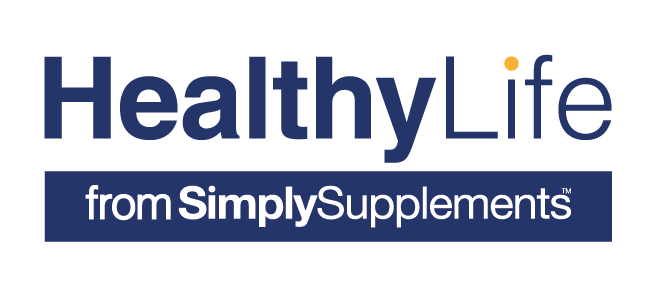
 Nicole
Nicole 